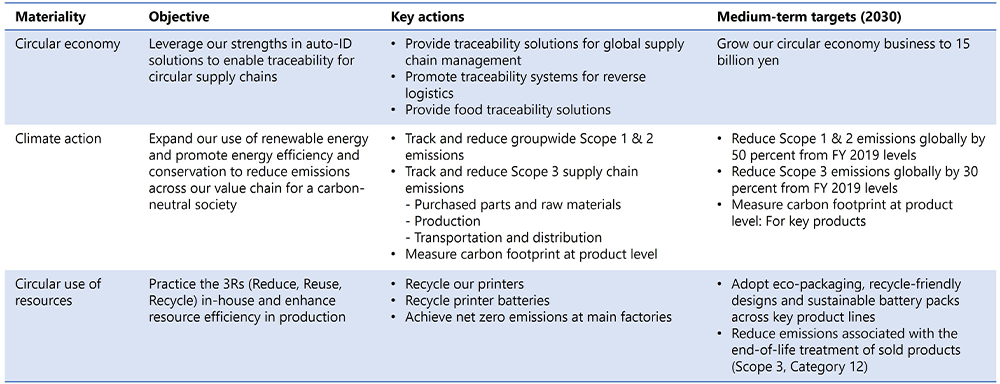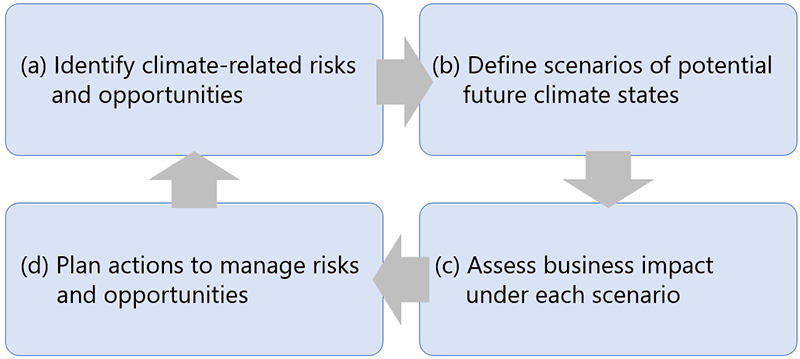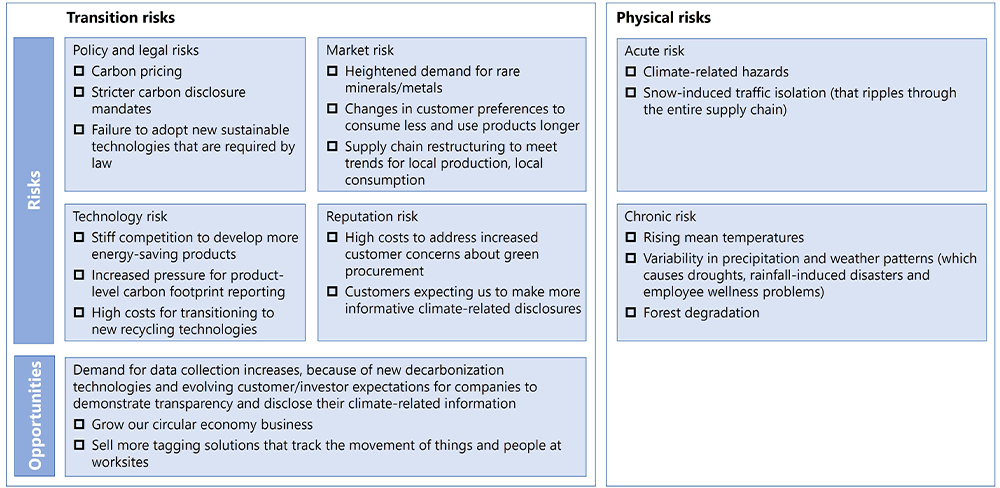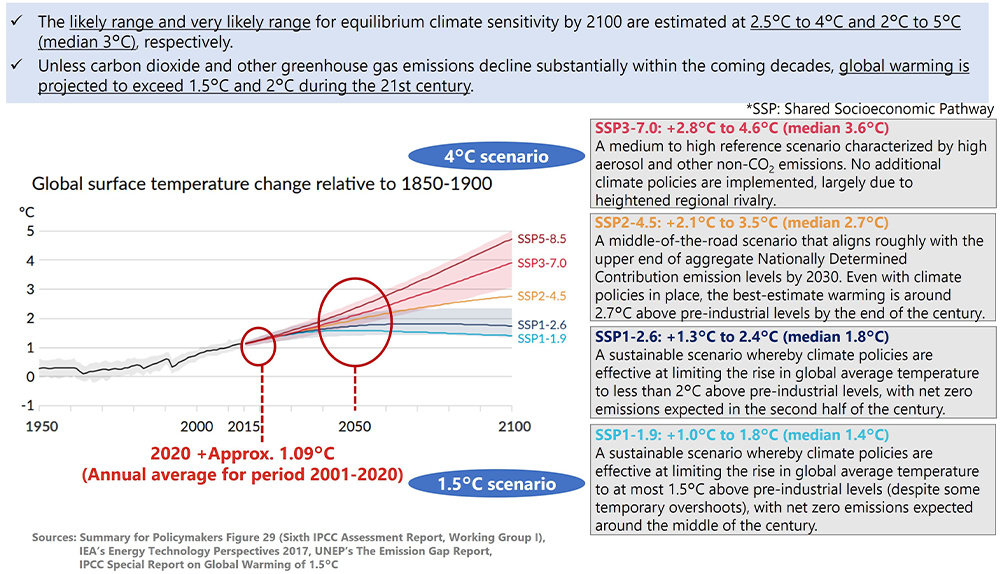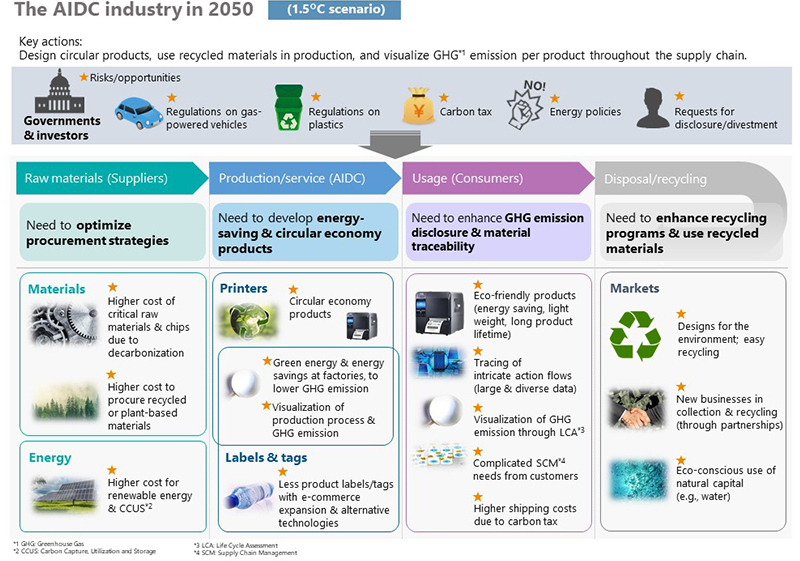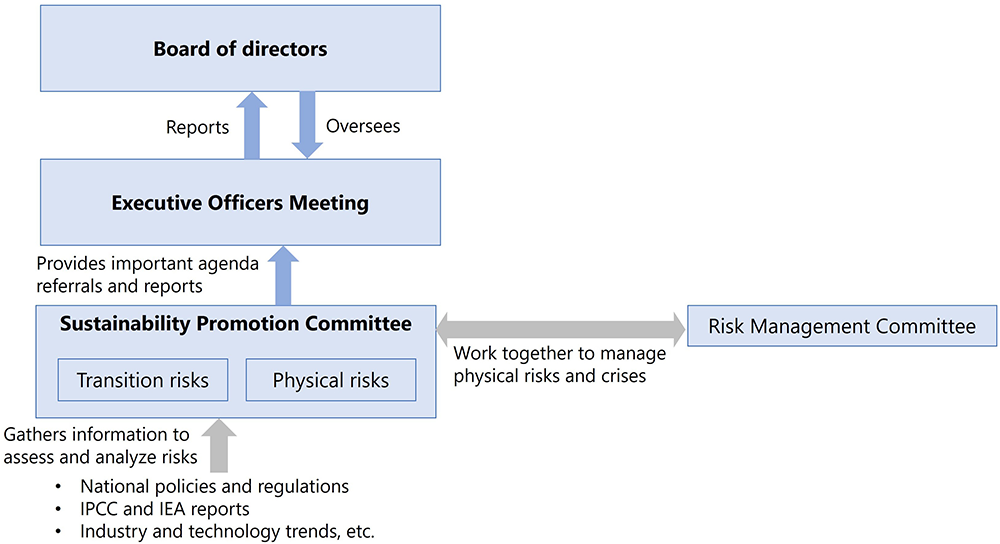The 1.5°C scenario presents substantial risks associated with rising production costs. At the same time, this scenario also presents significant opportunities as demand increases for eco-friendly products, sustainable solutions and traceability systems that underpin the circular economy. These trends align closely with our core competencies in tagging, offering opportunities for business expansion and innovation.
In contrast, the 4.0°C scenario poses physical and business continuity risks, which would lead to sharp increases in our operating costs. Even today, rising mean temperatures and climate-related hazards are already huge problems for society. It is of urgency that we work to strengthen supply chain resilience, with a focus on our production and logistics networks.
In both scenarios, our consumables business, which accounts for a key part of our revenue, will face risks if forest resources become scarce and paper costs increase. We need to explore ways to work with paper manufacturers to make our consumables business more sustainable over the long term.

